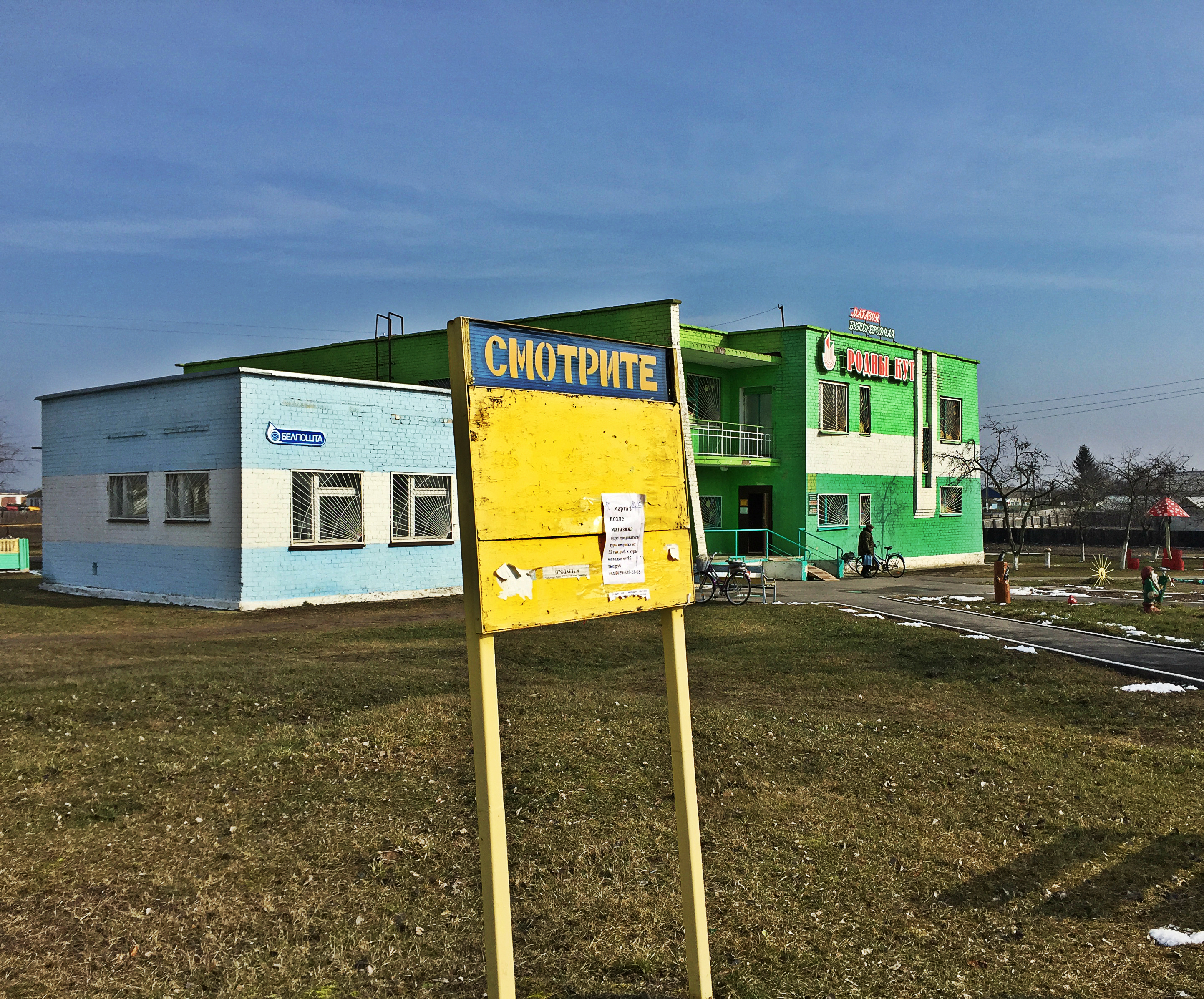![belarus_border_town_chernobyl [image : 82891606]](http://www.gannett-cdn.com/-mm-/6fbbf2c1bc6ba1dc4cee4da910bd9e2ff1cc77d1/c=0-0-2802-2395/local/-/media/2016/04/11/USATODAY/USATODAY/635959682687599209-Store1-ADJUSTED.jpg)
About 70% of the radioactive fallout from the Chernobyl disaster landed in Belarus, heavily contaminating one-fourth of the country, one-fifth of its agricultural land and affecting at least 7 million people. More than 2,000 towns and villages were evacuated, and about a half-million people have been relocated since 1986, according to Chernobyl International, a humanitarian organization with links to the United Nations. The group estimates that Chernobyl costs Belarus 20% of its annual budget.
![Chernobyl's ripple affect, the border towns [video : 83100840]](http://videos.usatoday.net/Brightcove2/29906170001/2016/04/29906170001_4847354503001_4847295985001-vs.jpg?pubId=29906170001)
SUDVOKO, Belarus — Igor Buynevich and Nikilay Kotlyarchuk were observing a regular Sunday in a scruffy border town in Belarus by preparing to drink vodka behind a small grocery store and pass banter back and forth.
It was 8 a.m., sunny but frigid cold. Chernobyl’s nuclear power plant lay less than 4 miles away.
Buynevich was leaning on a bike with a homemade storage box fastened on back. Three bottles of vodka and a half-empty bag of hard candies were neatly packed inside.
They said they were waiting for friends to join them.
“Many of us in the area have cancer or diabetes,” said Kotlyarchuk, 35, an art teacher in Sudvoko’s school.
He earns about $150 per month, a sum he said was not enough to prosper on but kept him from starving.
"At least two-thirds of the kids where I teach can’t do physical exercise because if they fall down it is a very real possibility they will break a leg or worse," he said, then offered some vodka.
![635964107799315639-Belarus-Zone7.jpg [image : 83123062]](http://www.gannett-cdn.com/media/2016/04/16/USATODAY/USATODAY/635964107799315639-Belarus-Zone7.jpg) "Our lives are not good," he said. "It’s the same for all in this region. It’s the secret everyone knows."
"Our lives are not good," he said. "It’s the same for all in this region. It’s the secret everyone knows."
As he spoke, Kotlyarchuk placed one hand on the bike to help keep it upright. He said he did not know how many people were ill from Chernobyl and the government never spoke about it, or if it did, it was only to say everything was normal.
Kotlyarchuk did not think everything was normal.
"We are in this position because of Chernobyl, but what can we do about it?" he said. "Even after all these years, we know nothing."
Belarus is not known for rolling tumbleweed and the sound of dry, hollow wind. But that image would not be out of place in Sudvoko. A handful of dogs were heard in the distance, the village’s wide but featureless main street seemed to have no central focal point. There were no cars and little sign of the town’s few thousand inhabitants.
"We often joke that some of these sick kids have three legs," said Buynevich, 36. He works for an energy firm and earns about twice what Kotlyarchuk does. "Although I haven’t seen that myself."
Buynevich said he believed, although he admitted he had no way of knowing for sure, that children born after the accident are now seeing the most medical problems. (Buynevich and Kotlyarchuk were 5 and 6, respectively, at the time of the accident.)
Neither man wanted to discuss his own health in detail, or that of his family.
Recent independent field research by Greenpeace concluded that harmful isotopes such as cesium-137 and strontium-90 have decreased considerably in Belarus since 1986, but they persist in economically depressed towns like Sudvoko.
Many inhabitants continue to eat fruit and vegetables, fish, mushrooms and berries cultivated in areas exposed to radiation.
"Did you know they eat cheese from this region in Poland and Russia?" Buynevich said.
Radioactive materials are also redistributed by forest fires.
Last year, Buynevich said, a forest fire on the Ukrainian side of the border combined with high winds caused radiation here to spike as much as 50 times the average level. He knew that only because his brother works as a guard in the Polesie State Radioecological Reserve, Belarus' Exclusion Zone.
No one in the town had any way of measuring it.
![Interactive Graphic [oembed : 83183878] [oembed : 83183878]](/Portals/_default/Skins/PrestoLegacy/CommonCss/images/smartembed.png)


![635964105598921534-Nikilay-Kotlyarchuk-1.JPG [image : 83122950]](http://www.gannett-cdn.com/media/2016/04/16/USATODAY/USATODAY/635964105598921534-Nikilay-Kotlyarchuk-1.JPG)
![635964109484594442-Bordertown-1.JPG [image : 83123084]](http://www.gannett-cdn.com/media/2016/04/16/USATODAY/USATODAY/635964109484594442-Bordertown-1.JPG)
![Chernobyl 30 years later [gallery : 83036164]](http://www.gannett-cdn.com/-mm-/95af056faa4aa06276311e77a316ba924da8535f/c=62-0-2926-2448/local/-/media/2016/04/14/USATODAY/USATODAY/635962404487303175-XXX-Zone-1.JPG)
